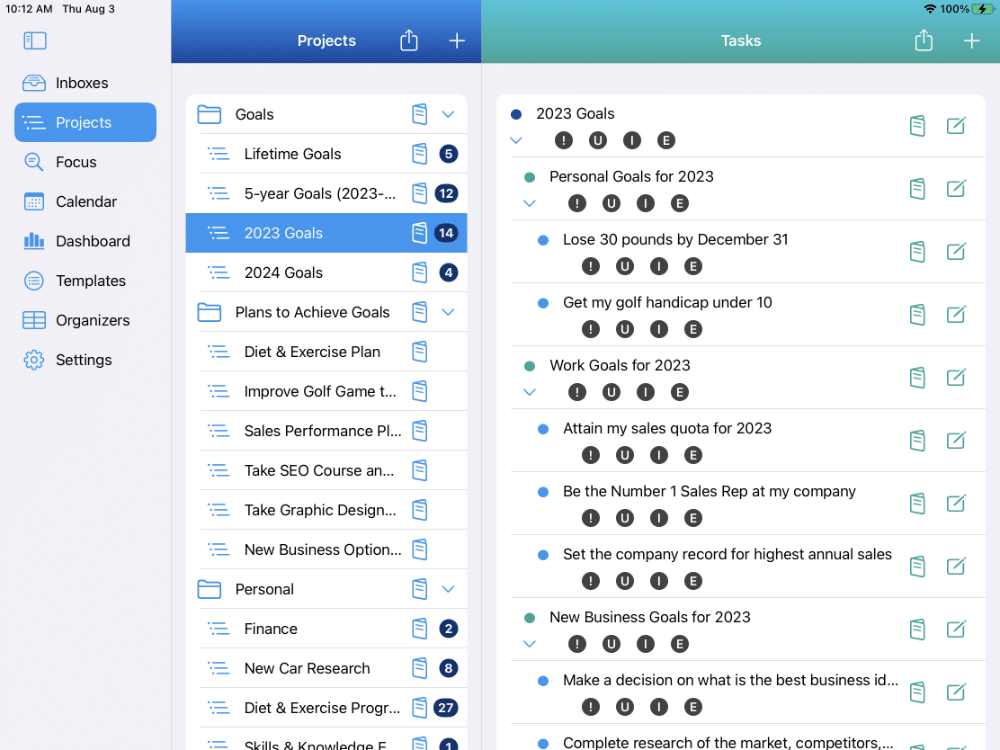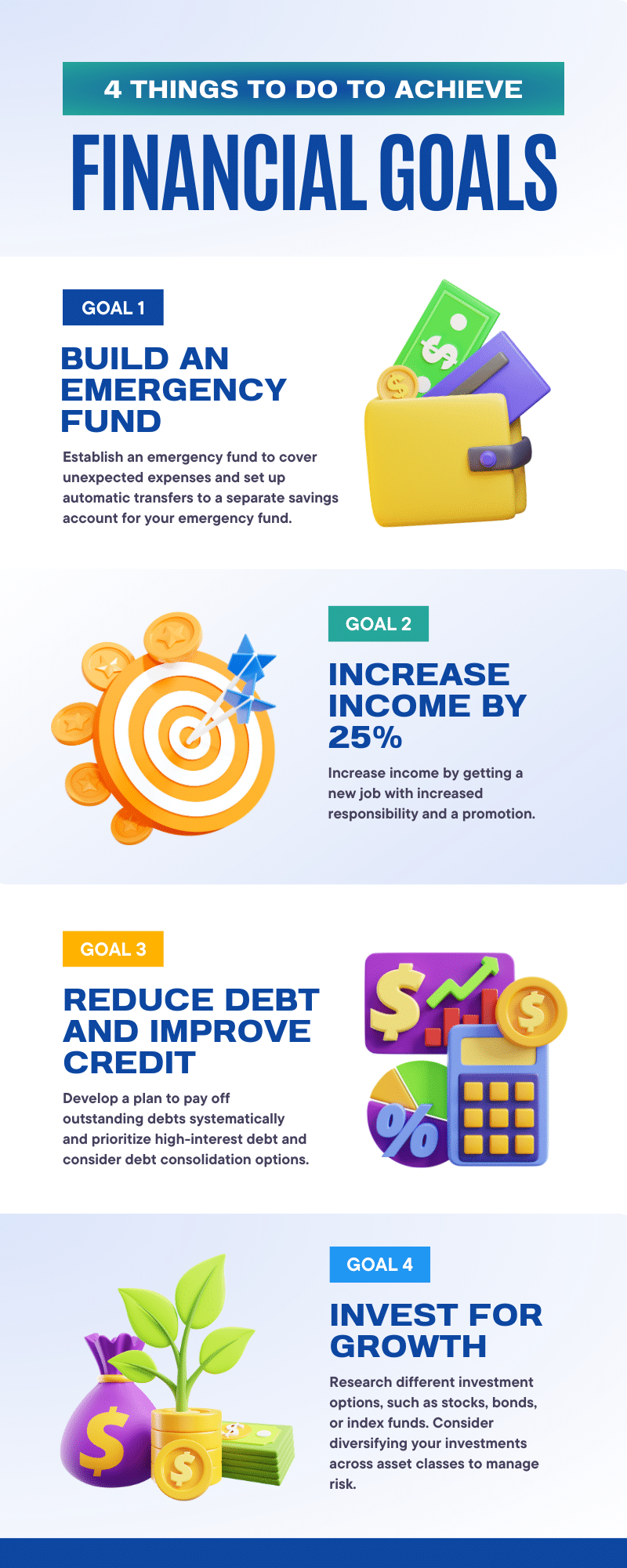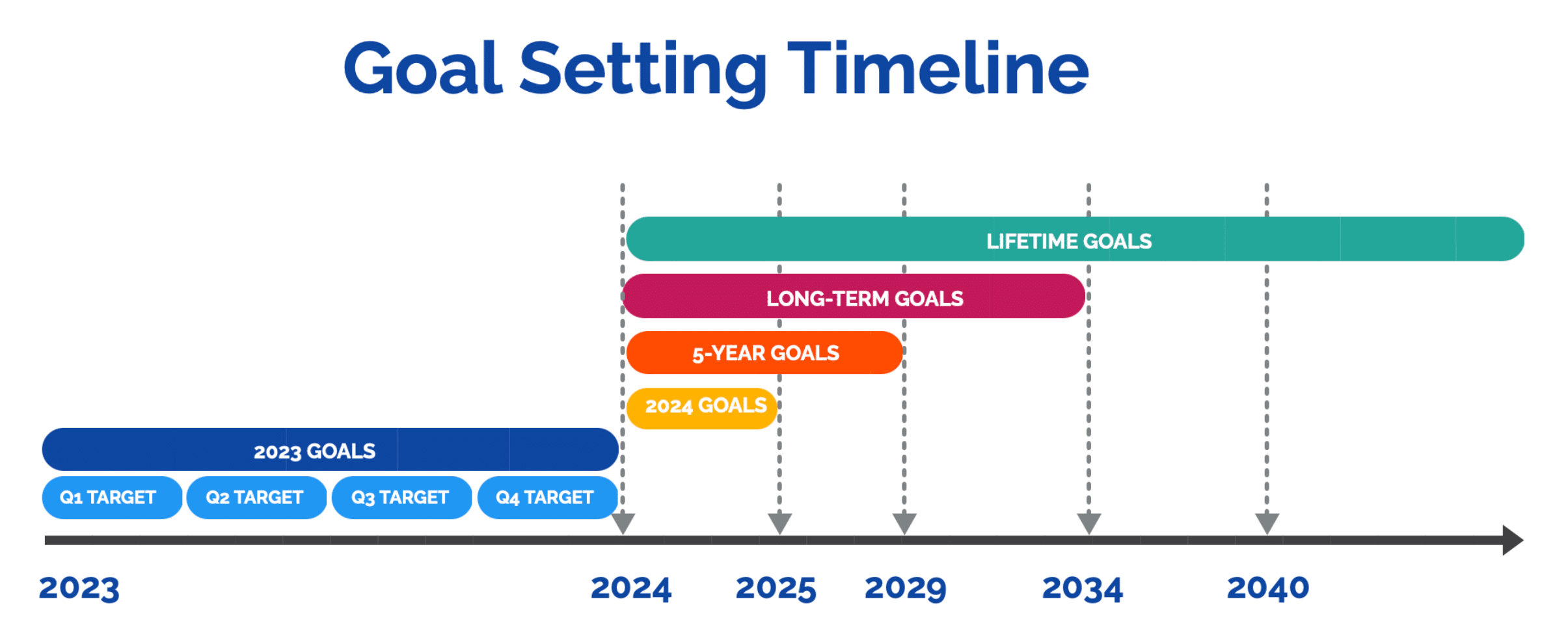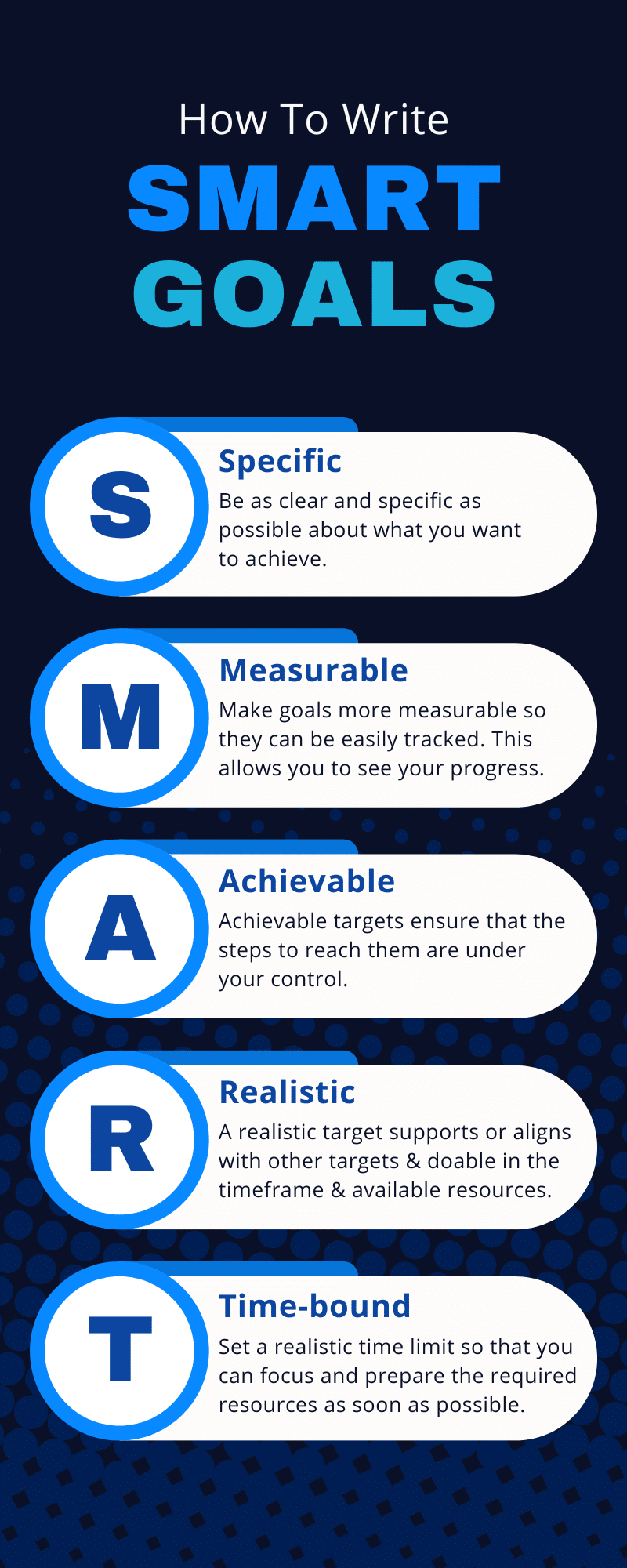Goal Setting:
Your Roadmap To Amazing Success in 2023 and Beyond
Goal Setting
Take Control of Your Future With Goal Setting
Setting personal goals is an essential aspect of living a fulfilling life. It allows us to align our actions with our values and aspirations, ensuring that we are actively working towards what truly matters to us as individuals.
When goal setting, It’s important to consider various aspects of life such as career, business, relationships, family, health, personal growth, and leisure. Decide what you want to achieve in each area.
In this way, we can create a holistic approach that contributes to our fulfillment and sustainable development by addressing these different areas.

Goals are the intended destinations we set for our lives. It’s what we want to achieve. When backed with a strong purpose, they help guide us toward what truly matters.
When we set goals, we create a clear path to follow, allowing us to stay focused and avoid distractions along the way.
Imagine embarking on a journey without any destination in mind. You would wander aimlessly, unsure where you’re going or why you’re even traveling.
Goals act as signposts, showing us the way forward and helping us make decisions that align with our aspirations.
Set Goals
For Each Area Of Your Life
Get what you want out of life — by design
In this section, we will explore different types of goals you may want to achieve for the different areas of your life, such as personal, work, business, sports, family, friends, networking, skills enhancement, and spiritual enhancement. You can also set life goals for who you want to be, what you aspire to do, and what you want to have.
Goal setting can be a fun exercise as well, as it puts you in charge, and allows you to think positively about what you’d like to achieve.
PERSONAL GOALS
Personal improvement, spiritual enhancement goals, skills development goals, etc.
WORK & PROFESSIONAL GOALS
Promotions, skills & knowledge enhancement, certifications, sales quotas, income, recognition, awards, etc.
BUSINESS GOALS
Revenue growth, profit goals, size of customer base, start a side hustle, launch a business, etc.
FAMILY GOALS
A new house or location, remodeling, landscaping, additions, accomplishments by your children, activities, vacations, etc.
FINANCIAL GOALS
Income goals, savings goals, wealth accumulation, asset portfolio goals, retirement goals, debt-free, etc.
CAREER GOALS
Career earnings goals, become a C-Level exec, become a partner, a career change, etc.
EDUCATION & LEARNING GOALS
Academic goals. Get a Master’s degree, earn an advanced certificate, learn new skills, prepare for what you need for a new business, etc.
FRIENDS & NETWORKING GOALS
Attending professional events, joining online communities, getting a target number of followers or initiating conversations with industry leaders
SPORTS GOALS
Mastering a sport, lowering your golf score, running a marathon, winning a tennis tournament, etc.
ADVENTURE GOALS
Travel goals, sail across the Atlantic, climb a mountain, scuba diving, white water rafting, etc.
HEALTH GOALS
Exercise goals, diet goals, blood pressure goals, running goals, weight lifting goals, BMI goals, etc.
Time-Based Goals
Get All of your ideas, tasks, and open items into IdeasToDone
Setting goals followed by goal achievement is essential to leading a fulfilling life. Goal setting gives us a sense of purpose, direction, and motivation to strive towards something we want.
However, personal goal setting can be challenging, and knowing where to start is not always easy. That’s why it’s important to understand the different types of goals and how they differ.
In this section, we’ll explore different time-based goal setting, including lifetime goals, long-range goals, 5-year goals, 3-year goals, and annual goals.
LIFETIME GOALS
Lifetime goals are long-term and have no set deadline, such as becoming financially stable, living in a particular country, or raising a family. These life goals are usually significant aspirations that can take years or even decades to achieve.
The key to setting lifetime goals is to think about what you want in the long term, regardless of obstacles or challenges that may arise. One way to approach lifetime goals is to list them out and then to choose the most important ones and make a plan on how to achieve them.
When goal setting, you should consider setting lifetime and long-range goals first. Then work your way down to goals with shorter time frames. Ideally, they would all align in support of one another. Long-range goals don’t happen quickly. So 3-year and 5-year goals would support and align with your lifetime goals.
LONG-RANGE GOALS
Long-range goals are similar to lifetime goals but have a more specific timeline, typically spanning over five years or more. They often serve as a stepping stone towards achieving our lifetime goals. Long-range goals are more concrete, measurable, and attainable than lifetime goals. They could be anything from earning an advanced degree to buying a new home.
3-YEAR & 5-YEAR GOALS
You can also set goals for an intermediate range of time. 5-year goals are a subset of long-range goals and represent our mid-term aspirations. They are typically specific, measurable, and attainable, such as paying off a loan, saving for a down payment on a house, or launching a new business.
3-year goals represent a more immediate-term goal. These are goals that require consistent work and effort over time to achieve.
3-year and 5-year goals are stepping stones for your lifetime goals and long-range goals and would align with them. Likewise, 3-year and 5-year goals should also align with your annual goals.
ANNUAL GOALS
Annual goals are shorter-term goals, typically lasting one year or less. They are attainable and measurable, such as losing a certain amount of weight, reading more books, saving a certain amount of money, or achieving 150% of your sales quota.
To achieve annual goals, one should break them down into quarterly, monthly, and weekly targets. Then assess your progress regularly, and adjust your strategy and plans as needed.
Annual goals should be more specific and more detailed than medium and long-range goals.
Annual goals would serve as stepping stones to your 3-year, 5-year, and lifetime goals.
QUARTERLY GOALS & OBJECTIVES
Quarterly objectives are very specific. They should be quantified and measurable so you know whether you achieved them or not. They should not be vague or ambiguous. They should be realistic, and specify a deadline or target completion date. Quarterly goals and objectives should support and align with your annual goals.
MONTHLY GOALS & OBJECTIVES
Monthly goals would likewise support and align with your quarterly goals & objectives. These goals and objectives would be more detailed, and be very realistic and achievable.
WEEKLY TARGETS
Weekly targets would align with your monthly goals and objectives. You would likely schedule these actions in the IdeasToDone In-App Calendar, and block the needed time on your schedule.
Use SMART Goals & Objectives
Goal Setting with SMART Goals Increases Your Success
Do you want to set and reach your goals?
Attaining success in life means having clear and achievable objectives.
To achieve this, it’s important to understand the basics of goal setting and how to create a plan for achieving them. The SMART goals approach is an effective way to set goals and objectives that will lead to meaningful results.
SMART stands for Specific, Measurable, Achievable, Realistic, and Time-bound. It is a goal-setting system that helps you plan and organize your goals and objectives so that you can work towards achieving them.
SPECIFIC
The most important step in the SMART goal setting process is to create specific and challenging goals. The more detailed you are, the clearer your focus will become. Take the time to think about what you want and how it relates to other goals in your life. Get several ideas, choose the best one, and plan each step in detail.
MEASURABLE
When you set goals, you should make them measurable. This means that you should be able to keep track of your progress and measure your success. Make sure that each goal has a set timeline. Decide on metrics or key performance indicators (KPIs) to monitor your progress.
ACHIEVABLE OR ATTAINABLE
Set goals that are ambitious yet achievable. Also, consider adding a “stretch” goal. For example, your sales quota might be X, and your stretch goal might be 2X. In this way, if you fail to hit your stretch goal, you’ll likely still hit your goal.
REALISTIC
You should set challenging goals. However, they should also be realistic given your available resources and the timeframe in which you want to achieve them. They should also be relevant, meaning they should fit into your overall life plan. Consider how each goal will help you achieve your long-term objectives and ensure that it aligns with your values.
TIME-BOUND
The final step with goal setting is to set a timeline for achieving each goal. Don’t set goals with an open-ended time frame or where time is not specified. Setting deadlines will help you stay motivated and keep track of your progress. You’ll also try to figure out how to get it done on time, and you’ll be happy with that!
Related Goal Setting Topics
Delving Into Milestones, Strategies, Objectives, and Targets
It’s also important to understand related topics such as milestones, strategies, objectives, and targets as you begin goal setting. These elements play a crucial role in goal setting and contribute significantly to achieving your goals.
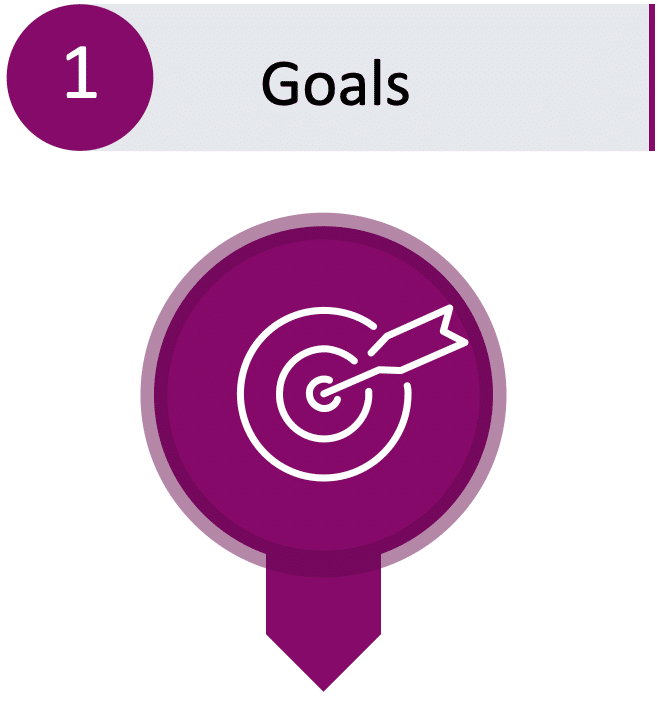

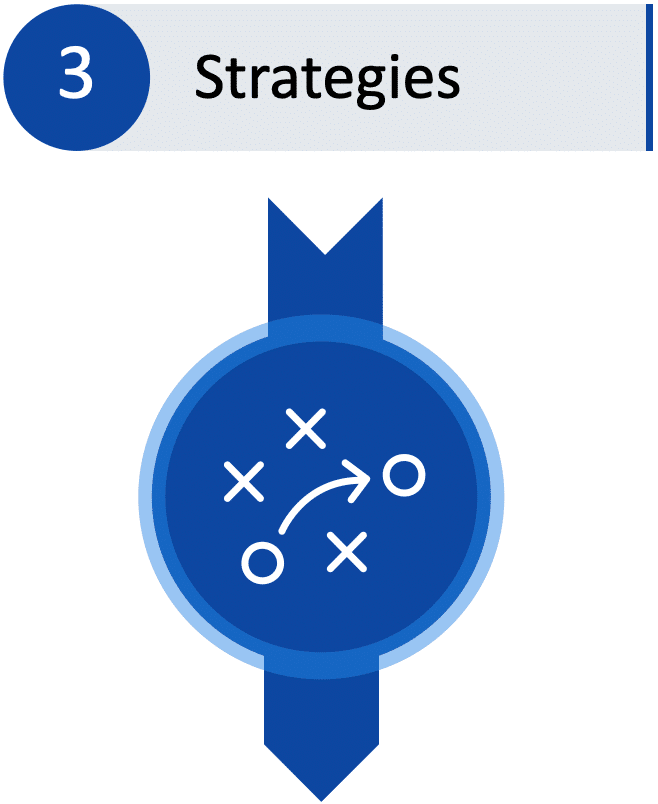



GOALS
The first thing you want to do is set your goals.
Goals are the result or achievement toward which effort is directed. It’s the end that one strives to attain. It’s what you are aiming for or what you are aiming to achieve.
Goals are aspirational statements you work toward to help you grow and achieve more.
OBJECTIVES
Once you’ve set goals you’d like to achieve, the next step toward achieving your goals is to break them down into objectives.
Objectives are more specific than goals in terms of their aims and timeframes (which are usually shorter).
Objectives are specific, measurable steps that you need to take to achieve your goal. They provide a clear direction and focus for your efforts, making your goal more attainable. Setting clear and specific objectives is a key aspect of effective goal setting.
Objectives are specific outcomes or results that an individual sets out to accomplish within a defined timeframe. They provide a clear direction and serve as stepping stones toward achieving larger goals.
STRATEGIES
A strategy, on the other hand, defines how you will accomplish an objective. A strategy can change based on opportunity or obstacles, while an objective should remain the same.
If your objective is to lose 40 pounds, you might use a strategy such as going on a keto diet, starting intermittent fasting, or both.
Strategies are ideas and plans that outline the best approach and high-level steps you’ll take to achieving your goals. They provide a roadmap for your goal setting journey, guiding your efforts and decisions. A well-formulated strategy can greatly increase your chances of achieving your goals.
MILESTONES
Milestones are significant events or stages in your goal setting journey.
They serve as markers that indicate progress toward your goal. By setting and achieving milestones, you can keep track of your progress, stay motivated, and ensure that you’re on the right track toward achieving your goal.
TARGETS
Targets are specific outcomes or results that you aim to achieve.
They provide a clear benchmark against which you can measure your goal achievement progress and success. Setting clear and achievable targets can enhance your motivation and increase your chances of achieving your goals.
Targets are similar to objectives but often have more quantifiable measures attached to them. They also are often used for shorter periods of time such as a week, month, or a quarter. They represent specific milestones or metrics that need to be reached along the way.
PLANS
Once your goal setting is complete, you’ll want to start putting together your plans to make your goal achievement a reality.
Goals are essential in our lives, and setting them is just the beginning of the journey. The outcome of a clear and concise goal setting is an achievement. However, having a goal is not enough to achieve it. One of the best ways to ensure that you achieve your set goals is by creating and following well-crafted plans.
Every great accomplishment begins with a plan. Whether it’s climbing a mountain, building a house, or launching a business, success in any endeavor requires a clear roadmap. This is where personal planning comes into play. It is a powerful tool that helps individuals organize their thoughts and outline the steps necessary to reach them.
Each objective should be broken down into a detailed list of manageable tasks. Listing these tasks will give you a clear idea of what needs to be done and help you stay organized.
13 Tips For Goal Setting
Setting Goals for Success
Achieving your goals is challenging. It requires dedication, motivation, and hard work. But with the right attitude and strategies in place, you can make progress towards achieving any goal you set your mind to. Here are some of our top tips for goal setting in your personal, work & professional activities, business aspirations, and life that will help get you on track for success:
Tip #1 – Establish Your Purpose
Establishing a clear purpose when goal setting is paramount to achieving success. Without direction, our goals become arbitrary with no real meaning or substance. Setting a purpose serves as the foundation that guides our decision-making, motivates us to take the necessary steps, and allows us to measure progress along the way.
Additionally, the purpose of a goal often acts as a source of inspiration, fueling the desire to move forward and stay committed to the objective. When we establish a clear purpose, we gain a sense of clarity and direction, allowing us to create a roadmap that leads to success.
In fact, studies have shown that individuals who set specific goals with a clear purpose are more likely to achieve success in various domains of life, including career, health, and personal growth.
In short, establishing a purpose is an essential component of goal setting, helping us to clarify what we want, stay focused on our target, and achieve our aspirations.
Tip #2 – Make a game out of it!
Put a little fun into it. Treat goal setting like you would a game. Get to the next level!
Tip #3 – Think Big!
When goal setting, especially 3-year, 5-year, long-range, and lifetime goals, think big! If you don’t envision it or even consider it, you’ll be unlikely to hit it! What would put a really big grin on your face? In each area of your life? And what difference would it make in your life when you achieve it?
Tip #4 – Expand Your Thinking
When looking out into the future while setting your longer-range goals, take a look at different scenarios. Expand your thinking. Ask yourself some questions such as “How could I create a big business?” or “What could I do to double my income?” or “What if I add a side hustle that might grow into something much bigger?” Or, even more ambitious, like “What if I could create 3 businesses?” or “What if I could go from 1 location to 10 locations?” Then, rather than get stopped by obstacles, write down what you’d need to do to overcome them. Create a separate project in IdeasToDone for the ways to overcome these obstacles and start working on them.
Tip #5 – You can learn anything
With determination, you can acquire any skill you desire. Free resources are readily available to explore a wide range of subjects. For instance, if you are venturing into a new business, you may encounter unfamiliar areas crucial for success. While you may excel as a dentist or an accountant, becoming well-versed in website development, marketing, finance, SEO, graphic design, and more becomes essential. Remember, where there’s a will, there’s a way. Start your journey of continuous growth today. Create a learning project in IdeasToDone, with a list of all the things you need and want to learn, and start working on it!
Tip #6 – Set Specific, Measurable Goals
When goal setting, break down the larger goal into specific, achievable objectives, milestones, and targets that you can measure. This way, you’ll know where you are in relation to your target and overall goal. For example, if the larger personal goal is to lose weight, set specific, measurable weight loss targets for each week, month, or quarter.
Tip #7 – Break down big goals into smaller, manageable tasks
As you first start on the road to achieving your goals, you might feel a bit overwhelmed, especially when your goals are big and ambitious. As a friend once asked me, “How do you eat an elephant?” I sat there puzzled, and then he told me the answer, “One bite at a time!”
The moral of the story is to break big goals, plans, or projects down into smaller, more manageable tasks. Then, you can increase your chances of success considerably. Think of it like climbing a mountain – instead of focusing on reaching the summit all at once, you concentrate on each step as you progress toward your ultimate destination.
Sub-Goals
Sub-goals are an incredibly effective tool in goal setting. Sub-goals break down larger goals into smaller, more achievable tasks.
By setting sub-goals, individuals can easily track their progress and stay motivated, ultimately leading them toward successfully attaining their larger goals.
Furthermore, sub-goals create a clear roadmap toward achieving goals. This will give you a better sense of direction and progress toward your larger goal. Thus, sub-goals are easier to monitor and control, ultimately making the entire process far less daunting.
Additionally, sub-goals allow individuals to prioritize their efforts more effectively, ensuring that they always work toward the most important aspects of their larger goal.
Breaking down a larger goal into smaller, achievable ones is an effective way to make progress, increase motivation, and achieve success. Here are some examples of sub-goals:
CREATE A TIMELINE
Determine how long it will take to achieve the larger goal. Create a timeline with smaller, incremental goals or milestones along the way. For example, if the larger goal is to complete a marathon, set smaller goals to run shorter distances at specific times throughout training.
DIVIDE THE GOAL INTO PHASES
Break down the larger goal into smaller phases, each with its own set of achievable goals. For example, if the larger goal is to write a book, break it down into smaller phases, such as research, outlining, writing, and editing, and set your goals for each phase.
PRIORITIZE GOALS AND SUB-GOALS
Don’t forget to incorporate prioritization as part of your goal setting efforts. Determine which goals will help achieve the larger goal most effectively, and prioritize them. For example, if the larger goal is to build a successful business, prioritize goals related to building a strong customer base, establishing a brand identity, and developing a marketing strategy.
Tip #8 – Set short-term goals that are challenging yet possible.
When goal setting, it’s essential to strike a balance between ambition and impossible. It’s important to challenge yourself. If you don’t make it this time, get back on that horse and try again next week, next month, next year.
Consider your current capabilities and resources when determining what you want to achieve in the timeframe.
For example, if you’re aiming to lose weight, setting a goal of losing 10 pounds in the first week might be difficult, but not impossible. However, with each successive week, losing 10 pounds is impossible. You might disappear after a while!
Instead, aim for a more achievable target, like losing 1-2 pounds per week through a combination of exercise and healthy eating habits.
Tip #9 – Make sure your goals align with your values and priorities.
Your goal setting should be aligned with your values and priorities in life. When your goals reflect what truly matters to you, they become more meaningful and motivating. Take some time to reflect on what is most important to you at this stage in your life.
If family is a top priority for you, consider setting goals that allow you to spend quality time with loved ones or create a better work-life balance. Aligning your goals with your values will give you the drive necessary to stay committed even when faced with challenges.
Tip #10 – Stay positive
Goal achievement can be challenging. Therefore, a key factor when striving for personal success is staying determined and confident you’ll achieve your goal. Stay positive!
Tip #11 – Visualize Your Success
Visualize yourself achieving your goal. If your goal is to lose 40 pounds, picture yourself at that weight and what you’ll look like. Don’t lose sight of it, and use it as a source of motivation and drive.
Tip #12 – Regularly review and adjust your goals as needed
Goal setting is not a one-time event; it’s an ongoing process. As you progress towards your goals, circumstances may change, and new opportunities may arise. It’s important to regularly review and adjust your goals to ensure they remain relevant and meaningful.
Set aside time every few months to evaluate your progress and make any necessary adjustments. This allows you to stay flexible and adapt to changing circumstances while maintaining focus on what truly matters.
Tip #13 – Celebrate Your Achievements!
Celebrate each achievement to stay motivated and energized. For example, after achieving a specific smaller goal, celebrate with something you enjoy, like going out to dinner or treating yourself to a new outfit. And when you achieve challenging goals, don’t hold back — it’s time to celebrate!
Frequently Asked Questions
Questions you may have about goal setting
How long does it take to achieve a goal?
The time required to achieve a goal varies depending on its complexity, scope, and the time horizon you are setting your goals for (an annual goal, a 5-year goal, etc.). Some goals may be accomplished within weeks or months, while others might take years of dedicated effort.
Can I have multiple goals at once?
Yes! In goal setting, it’s common for individuals to have multiple goals across different areas of their life. However, it’s important to prioritize your goals and allocate your time accordingly. If you are new to goal setting, you can start by setting one or two goals. Then as you become more comfortable, add additional goals.
How often should I review my goals?
It is important in goal setting to regularly review your goals as it’s a good practice for staying on track. It is recommended to review them at least once a month or whenever significant changes occur in your circumstances.
What should I do if I encounter setbacks or obstacles?
Setbacks and obstacles are inevitable when working towards goals. As you are goal setting and planning, consider making contingency plans in advance for obstacles you may encounter. The key is to remain resilient and adapt your strategy & approach if needed.
Can goal setting help with work-life balance?
Absolutely! Goal setting can assist in achieving a healthy work-life balance by allowing you to define priorities and allocate time accordingly. By setting goals that encompass both professional and personal aspects, you can prioritize your goals and allocate your time accordingly.
Available on The App Store Now!
IdeasToDone Premium - $2.99 per Month or $29.99 per Year
1-Month Free Trial, Risk-Free
Download It Today!
ABOUT
DEVICE SUPPORT
FEATURES
VERSIONS
COMMUNICATION
© Productive Life Inc. 2023. All rights reserved.

